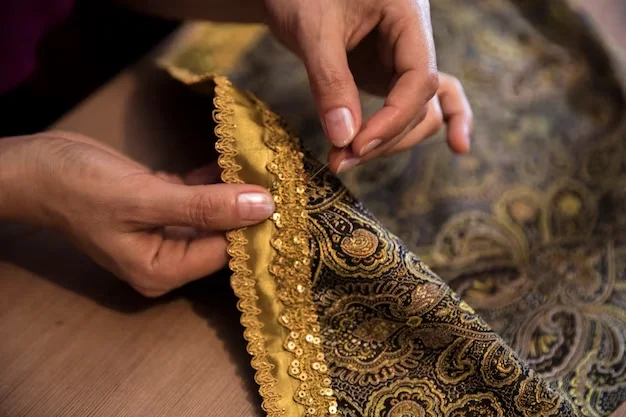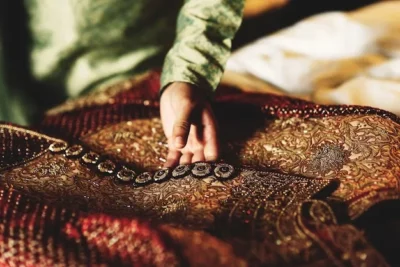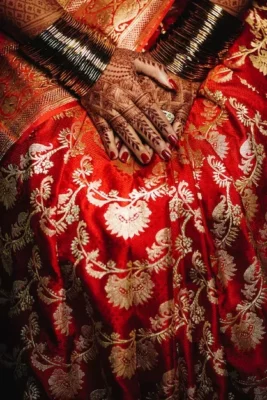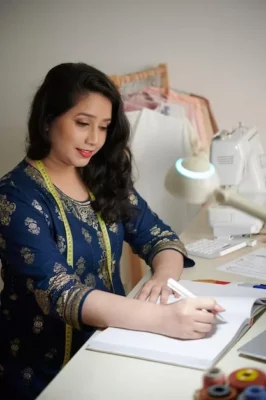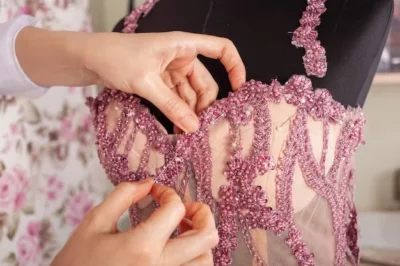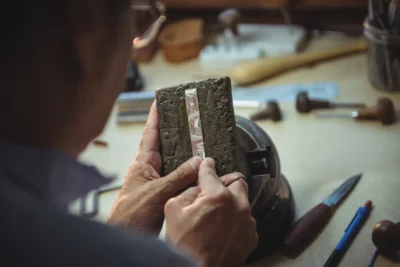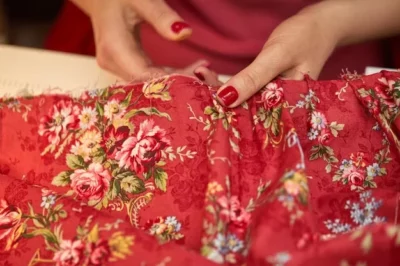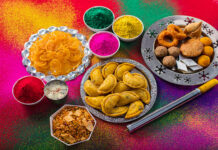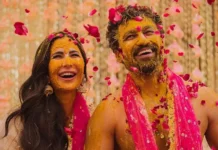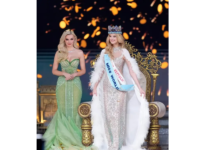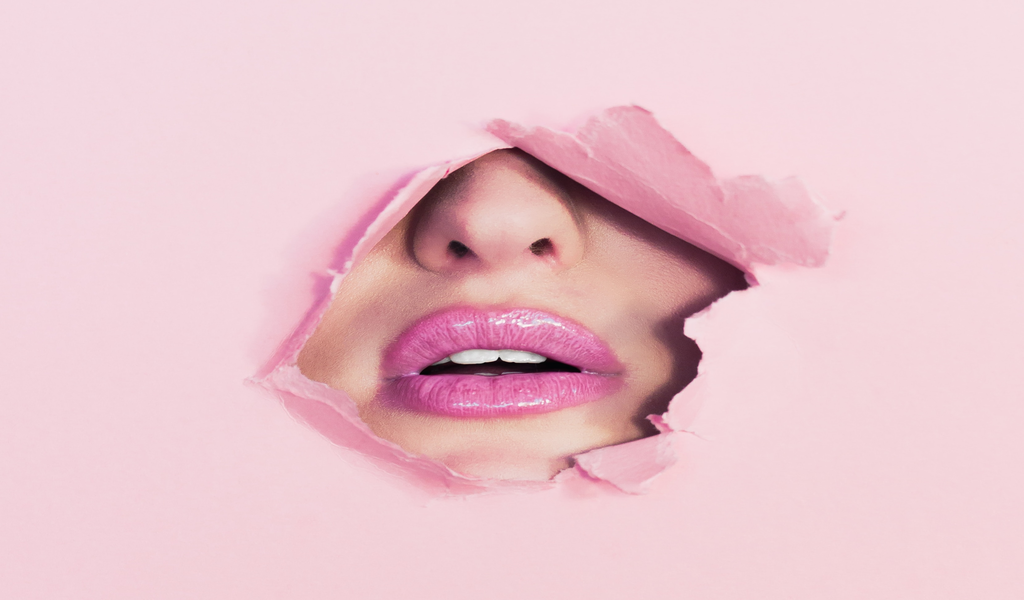When we think of a traditional Indian wedding, the first image that comes to mind is often a dazzling bride adorned in intricate, embroidered garments. Embroidery plays a pivotal role in the world of bridal fashion in India. It’s not just about adding a touch of elegance; it’s about weaving a story into every thread and creating a masterpiece that the bride will cherish for a lifetime. Join us on this journey as we delve deep into the art of embroidery in Indian bridal fashion, exploring its history, techniques, and the significance it holds in the hearts of brides and their families.
A Stitch in Time: A Historical Perspective
Embroidery is not a recent addition to the world of fashion; it has deep roots in India’s history. The art of embroidery in India dates back to ancient times when skilled artisans would handcraft exquisite pieces for royalty. The Mughal era, in particular, saw embroidery flourish, with intricate designs adorning the clothing of kings and queens.
Fast forward to the present day, and embroidery has evolved into an art form that beautifully fuses tradition with modernity. Today’s brides are spoilt for choice, with a plethora of embroidery styles at their disposal. From traditional zardosi and gota patti work to contemporary mirror and sequin embellishments, the options are as diverse as the brides themselves.
The Weaving of Dreams: Significance in Bridal Attire
Embroidery is more than just embellishment; it is a language of love, symbolism, and tradition. Each motif, each thread, and each color has a story to tell. Let’s take a closer look at some of the most significant embroidery styles in Indian bridal fashion:
- Zardosi – The Golden Thread of Royalty: Zardosi embroidery involves the use of metallic threads, sequins, and beads to create intricate patterns. It symbolizes opulence and grandeur, making it a popular choice for bridal wear. Zardosi work can take months to complete, but the result is nothing short of regal.
- Gota Patti – A Riot of Colors: Originating from Rajasthan, Gota Patti is known for its vibrant and colorful appeal. It uses golden lace ribbon to create floral and geometric patterns. This style is often seen in Rajasthani and Gujarati bridal attire, adding a touch of vivacity to the ensemble.
- Mirror Work – Reflecting Tradition: Mirror work, or ‘sheesha embroidery,’ is a traditional technique from Gujarat and Rajasthan. Tiny mirrors are stitched onto the fabric in intricate patterns, symbolizing the reflection of evil and negativity. It’s a beautiful blend of artistry and spirituality.
- Resham Embroidery – The Versatile Silk Thread: Resham, or silk thread embroidery, is prized for its softness and versatility. It’s often used to create delicate floral and paisley motifs. Resham work can be subtle or extravagant, depending on the bride’s preference.
- Aari Work – The Fine Art of Precision: Originating from Kashmir, Aari work involves using a hooked needle to create fine, intricate patterns. Known for its precision and finesse, it’s a favorite choice for bridal shawls and stoles.
The Artisans Behind the Magic: Master Craftsmen and Craftswomen
Behind every stunning piece of embroidered bridal wear, there are skilled artisans who have dedicated their lives to this craft. These craftsmen and craftswomen are the unsung heroes of the bridal fashion industry, pouring their heart and soul into each creation.
Most of them inherit this craft from their ancestors, passing down the secrets of embroidery from one generation to the next. The level of expertise required is awe-inspiring. These artisans work tirelessly to ensure that every stitch is perfect, every bead is in place, and every design is flawless.
It’s not just a profession for them; it’s a labor of love. Many of these artisans work in small villages and towns, where they continue to use traditional techniques passed down through the ages. Their dedication is what makes every bridal outfit a work of art.
A Personal Touch: Customization and Bridal Identity
One of the most beautiful aspects of embroidery in Indian bridal fashion is the opportunity for personalization. Brides often have the chance to be involved in the design process, choosing motifs, colors, and patterns that resonate with their personal style and story.
Each piece of embroidery carries with it the bride’s aspirations, dreams, and cultural significance. It’s not just about wearing a beautiful outfit; it’s about wearing a piece of art that reflects the bride’s identity and heritage.
Moreover, brides often incorporate symbols and motifs that hold personal meaning, such as initials, auspicious symbols, or even love messages hidden within the intricate designs. These personalized touches make the bridal attire truly unique and meaningful.
The Modern Twist: Fusion and Contemporary Embroidery
While traditional embroidery styles continue to reign supreme in Indian bridal fashion, there’s also a growing trend towards fusion and contemporary designs. Brides are increasingly open to experimenting with new ideas, creating outfits that are a blend of tradition and modernity.
Contemporary embroidery techniques like thread painting, 3D embellishments, and digital printing are gaining popularity. These styles allow for greater creativity and can be a refreshing departure from the conventional.
Moreover, fusion wear, which combines elements from different regions of India or even global influences, is becoming a hot trend. Brides are not bound by tradition; they are free to choose what resonates with them, making embroidery a versatile tool for self-expression.
The Sustainability Angle: A Conscious Choice
In recent years, sustainability has become a major concern in the fashion industry. Thankfully, embroidery aligns well with the principles of sustainability. Handcrafted embroidery not only supports local artisans but also promotes the use of natural materials and reduces the carbon footprint associated with mass-produced clothing.
Many brides are now opting for sustainable bridal wear, which includes outfits made with eco-friendly fabrics and dyes. Hand-embroidered outfits, crafted with love and care, are a perfect fit for this conscious choice.
Additionally, vintage embroidery pieces, handed down through generations, are being repurposed and incorporated into modern bridal outfits. This not only adds a sentimental touch but also reduces waste and promotes the idea of heirloom bridal wear.
Embroidery in Wedding Accessories: Beyond the Outfit
Embroidery isn’t confined to just bridal attire. It extends to various accessories that complete the bridal look. Here are a few examples:
- Bridal Clutches: Embroidered clutches or potlis are popular choices for brides to carry essentials. These intricate pieces not only serve a practical purpose but also add a touch of elegance to the bridal ensemble.
- Footwear: Bridal footwear, often adorned with embroidery, is an important part of the bridal trousseau. These intricately designed shoes are both stylish and comfortable for long wedding ceremonies.
- Veils and Dupattas: The veil or dupatta is an integral part of Indian bridal wear. Embroidered with care, it adds grace and beauty to the bride’s overall look.
- Jewelry: Embroidered jewelry is a unique and trendy addition to bridal accessories. These pieces often feature intricate beadwork and thread embroidery, adding a touch of glamour.
- Gloves and Hand Fans: For brides who want to make a statement, embroidered gloves and hand fans can be a fashionable choice. They not only look exquisite but also serve practical purposes.
Embracing the Future: Online Customization and Global Reach
In today’s digital age, brides have the luxury of exploring embroidery options from the comfort of their homes. Online platforms and bridal boutiques offer a wide range of customization options, allowing brides to choose their preferred embroidery styles, colors, and fabrics.
This digital transformation has also made Indian bridal fashion accessible to brides around the world. International brides can now collaborate with Indian designers and artisans to create their dream outfits, thanks to virtual consultations and shipping services.
Conclusion: A Tapestry of Tradition and Innovation
Embroidery in Indian bridal fashion is not just about adorning the bride; it’s about preserving tradition, showcasing artistry, and telling a story. Each stitch is a testament to the skill and dedication of artisans who have passed down their craft through generations.
As brides continue to embrace both tradition and innovation, embroidery will remain at the heart of Indian bridal fashion, evolving to create timeless masterpieces for every bride’s special day. It’s more than just a trend; it’s a legacy that continues to weave its magic into the rich tapestry of Indian weddings. So, the next time you witness a radiant bride in her embroidered bridal ensemble, remember that behind those seams lies a world of artistry and love that has been perfected over centuries, making her wedding day truly unforgettable.





